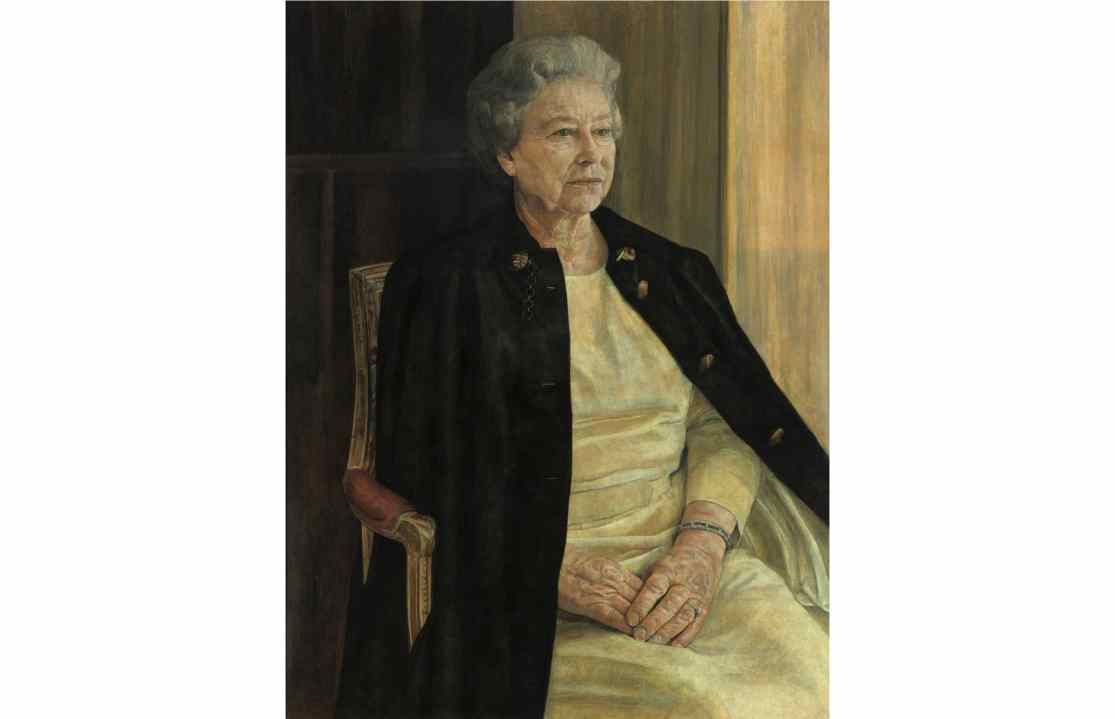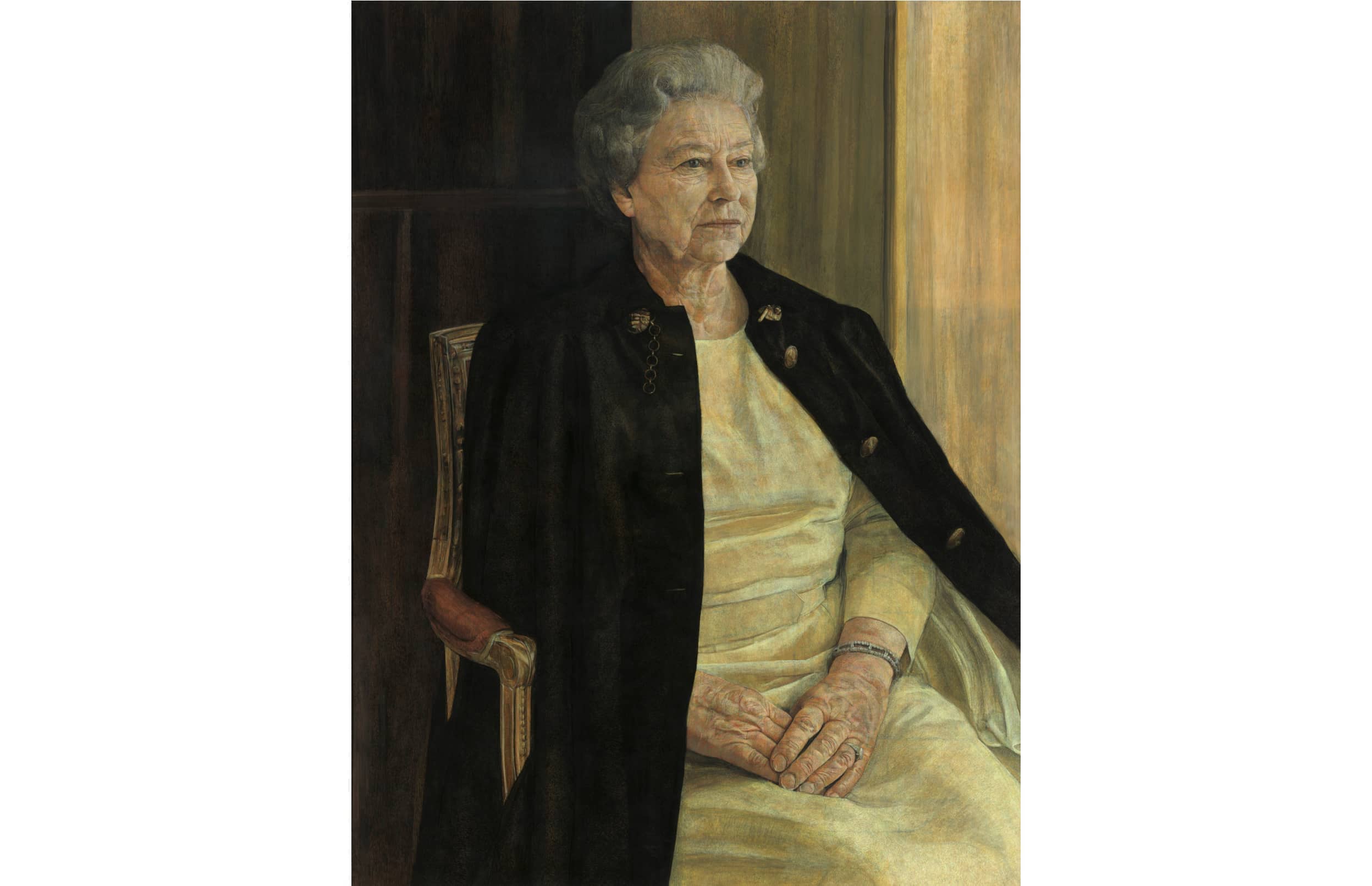In March 1995, I entered the Royal Society of Portrait Painters annual exhibition with a portrait of the Right Revd Michael Adie CBE, Bishop of Guildford. A new prize had been created that year to be awarded to the best portrait in the show. Unusually, the reward was in the form of a commission to paint someone in public life. The identity of the sitter was a secret. The evening before the opening, I was informed, to my astonishment, that I had won and the sitter would be Her Majesty the Queen.
I had to wait nearly six months before my first sitting. During that time there was very little I could do to prepare apart from think about how it might go. It wasn’t until I had a meeting with the Queen’s dresser at Buckingham Palace, while the Queen was still at Balmoral, that I could really begin to form an idea of what I was going to do in relation to my depiction and interpretation of my subject. The dresser helped me look through the Queen’s wardrobe for a possible outfit. I viewed a book in the Palace which shows every portrait that’s been painted of her during her reign, from the early portrait by Pietro Annigoni, right up to the then present day. Seeing these portraits all together helped me to select an outfit which would be sufficiently different to what had gone before. I decided on a pairing of the Boat Cloak and a yellow dress. The Queen decided on the jewellery.
At one point she became so animated I had to ask Sir Robert if I could ask her to sit still
A few weeks later I had my first sitting at Buckingham Palace. After waiting so long for this, I had succumbed to food poisoning at the last minute. If it had been any other sitter, I would have cancelled, but I felt I had to go through with it. I arrived at Buckingham Place with my materials and was met by a footman, who took me through what seemed like miles of corridor to the Yellow Drawing Room, on the first floor overlooking St James’s Park, which has been traditionally set aside for portrait sittings. I was deposited there by the footman and left alone to await the Queen’s arrival. While I was waiting, I felt queasier and queasier – partly the food poisoning, partly nervous anxiety. I left the room to find a nearby toilet where I could be sick. Shortly after I returned, the Queen entered the Yellow Room.
She was accompanied by her private secretary, Sir Robert Fellowes, who introduced us. Then came the task of finding a position for her to sit in, which was achieved by negotiation, and once settled I began a portrait drawing in pencil. I was struck from a painterly point of view by how much make-up the Queen was wearing, which was slightly disconcerting for me, as I felt it was obscuring the finer nuances you find in skin tones.
I returned a few weeks later for a second sitting, again in the Yellow Drawing Room. Although the Queen and I were rarely left alone together, as there was usually Sir Robert or Robin Janvrin in attendance, the Queen was always very willing to chat about things generally, or specifically about events which had recently occurred, including the massacre at Dunblane, and Sarah Ferguson’s jewellery going missing on a flight. At one point during one of the sittings she became so animated that I had to ask Sir Robert if I could ask her to sit still for a few minutes while I worked on a particular feature. He replied saying I was the boss, so I asked her, but to no real avail, as she soon became chatty and animated again. I felt I could only ask once.
My portrait of the Queen was finally finished in my studio in Chertsey at the end of April 1996 and unveiled by Virginia Bottomley at the Royal Society of Portrait Painters exhibition in May 1996. Did the Queen like my painting? It’s hard to tell. I recall her saying something favourable about the work in progress on one occasion, but she usually refrained from making any direct comments during the sittings.







Comments